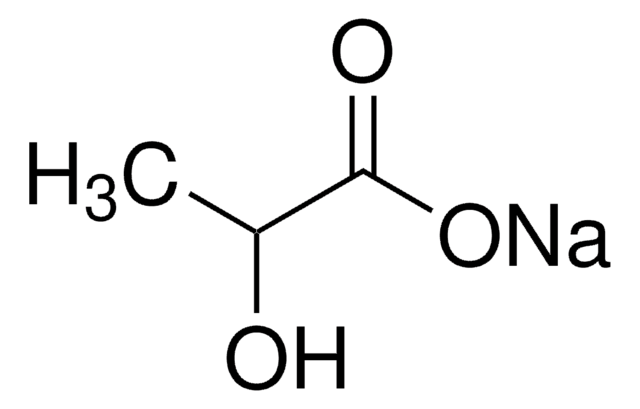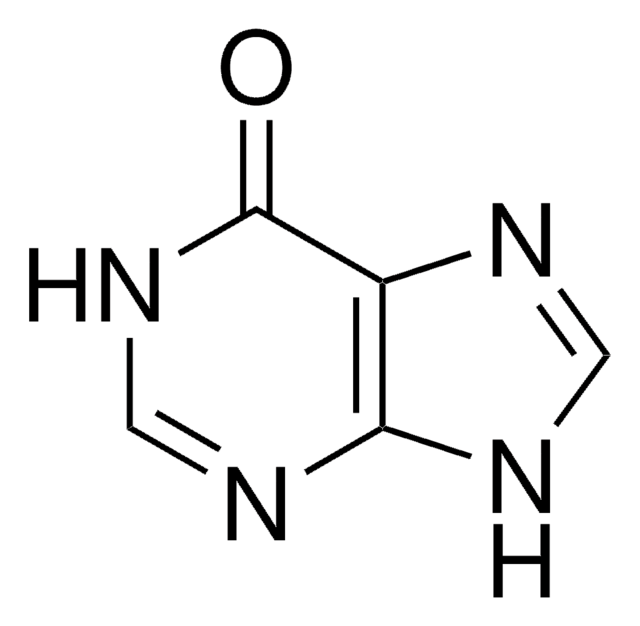P4562
Natriumpyruvat
powder, BioXtra, suitable for mouse embryo cell culture
Synonym(e):
α-Ketopropionsäure Natriumsalz, 2-Oxopropionsäure Natriumsalz, Brenztraubensäure Natriumsalz, Pyruvat Natrium
About This Item
Empfohlene Produkte
Produktlinie
BioXtra
Qualitätsniveau
Assay
≥99%
Form
powder
Methode(n)
cell culture | embryo: suitable
mp (Schmelzpunkt)
>300 °C (lit.)
Löslichkeit
H2O: 100 mg/mL
Lagertemp.
2-8°C
SMILES String
[Na+].CC(=O)C([O-])=O
InChI
1S/C3H4O3.Na/c1-2(4)3(5)6;/h1H3,(H,5,6);/q;+1/p-1
InChIKey
DAEPDZWVDSPTHF-UHFFFAOYSA-M
Suchen Sie nach ähnlichen Produkten? Aufrufen Leitfaden zum Produktvergleich
Verwandte Kategorien
Allgemeine Beschreibung
Anwendung
- as a supplement in Ca2+ + N-Tris(hydroxymethil)methyl-2-aminoethanesulfonic acid (TES)–NaCl medium for sperm incubation
- as a supplement in TCM-199 hepes modification solution for cumulus-oocytes complexes (COC′s) culture
- as a supplement in Dulbecco′s modified Eagle medium (DMEM) to culture mouse primary hepatocytes (MPHs) and also to intraperitoneally inject fasted mice for glucose production assessment
Biochem./physiol. Wirkung
Signalwort
Warning
H-Sätze
Gefahreneinstufungen
Eye Irrit. 2 - Skin Sens. 1B
Lagerklassenschlüssel
13 - Non Combustible Solids
WGK
WGK 1
Flammpunkt (°F)
Not applicable
Flammpunkt (°C)
Not applicable
Persönliche Schutzausrüstung
Eyeshields, Gloves, type N95 (US)
Analysenzertifikate (COA)
Suchen Sie nach Analysenzertifikate (COA), indem Sie die Lot-/Chargennummer des Produkts eingeben. Lot- und Chargennummern sind auf dem Produktetikett hinter den Wörtern ‘Lot’ oder ‘Batch’ (Lot oder Charge) zu finden.
Besitzen Sie dieses Produkt bereits?
In der Dokumentenbibliothek finden Sie die Dokumentation zu den Produkten, die Sie kürzlich erworben haben.
Unser Team von Wissenschaftlern verfügt über Erfahrung in allen Forschungsbereichen einschließlich Life Science, Materialwissenschaften, chemischer Synthese, Chromatographie, Analytik und vielen mehr..
Setzen Sie sich mit dem technischen Dienst in Verbindung.




